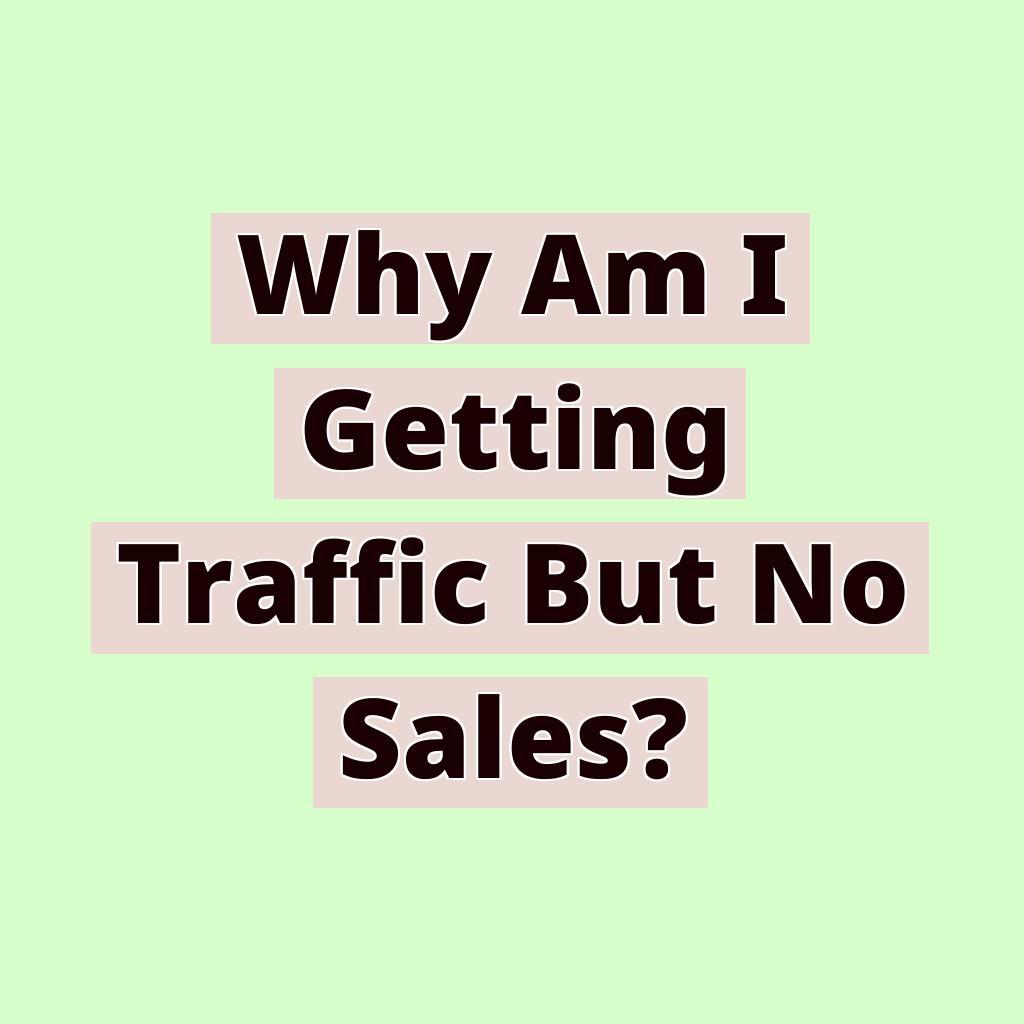Have you ever found yourself in a situation where your website is generating a significant amount of traffic, but the sales just aren’t coming in? It can be frustrating and confusing, especially when you’ve put in so much effort to drive traffic to your site. But fear not, because in this blog post, we’re going to explore the possible reasons why you might be experiencing this phenomenon and offer some practical solutions to help you turn those visitors into paying customers.
Understanding the Disconnect
Before we dive into the potential reasons behind this issue, it’s important to understand the disconnect between traffic and sales. Generating traffic is just the first step in the conversion process. While it’s great to have a high number of visitors, if they’re not converting into customers, then the traffic itself becomes meaningless. So, let’s explore some possible reasons why this might be happening and discuss strategies to bridge the gap.
1. Lack of Targeted Traffic
One of the most common reasons for low sales despite high traffic is a lack of targeted traffic. It’s important to ensure that the visitors coming to your website are genuinely interested in what you have to offer. If your marketing efforts are not targeting the right audience, you may be attracting visitors who are simply not interested in purchasing your products or services.
To address this issue, take a close look at your marketing strategies. Are you targeting the right keywords and demographics? Are you using the right channels to reach your target audience? By refining your marketing efforts and focusing on attracting the right kind of traffic, you can increase the chances of converting visitors into customers.
2. Poor User Experience
Another factor that can contribute to low sales despite high traffic is a poor user experience on your website. Even if you manage to drive a significant amount of traffic to your site, if visitors find it difficult to navigate, slow to load, or confusing, they are likely to leave without making a purchase.
To improve user experience, consider the following:
- Optimize your website’s loading speed.
- Ensure your website is mobile-friendly.
- Simplify the navigation and make it easy for visitors to find what they’re looking for.
- Streamline the checkout process and minimize any hurdles or unnecessary steps.
By enhancing the overall user experience, you can create a more favorable environment for visitors and increase the likelihood of conversions.
3. Ineffective Call-to-Action
Your call-to-action (CTA) plays a crucial role in driving conversions. It’s the element that encourages visitors to take the desired action, whether it’s making a purchase, signing up for a newsletter, or contacting your sales team. If your CTA is weak or unclear, visitors may not know what to do next, resulting in missed opportunities for sales.
To create an effective CTA, keep the following tips in mind:
- Make it clear and concise.
- Use action-oriented language.
- Highlight the benefits of taking the desired action.
- Place the CTA in a prominent location on your website.
By crafting compelling and persuasive CTAs, you can guide visitors towards the next step in the conversion process and increase your sales potential.
4. Lack of Social Proof
In today’s digital landscape, social proof is a powerful tool for building trust and credibility. If your website lacks social proof, such as customer reviews, testimonials, or case studies, visitors may hesitate to make a purchase. People are more likely to trust the opinions and experiences of others, especially when it comes to buying products or services online.
To leverage social proof, consider implementing the following strategies:
- Encourage satisfied customers to leave reviews or testimonials.
- Showcase case studies or success stories that demonstrate the value of your offerings.
- Display trust badges or certifications to instill confidence in your brand.
By incorporating social proof into your website, you can alleviate any doubts or reservations visitors may have and increase the likelihood of converting them into paying customers.
The Bottom Line
While it can be disheartening to see traffic flowing to your website without resulting in sales, it’s important to remember that conversion optimization is an ongoing process. By analyzing your marketing strategies, improving the user experience, refining your CTAs, and leveraging social proof, you can bridge the gap between traffic and sales. Remember, Rome wasn’t built in a day, and neither is a successful online business. Stay persistent, adapt, and continue to optimize your website to maximize your conversion potential. Before you know it, those visitors will turn into loyal customers, and your sales will skyrocket.
